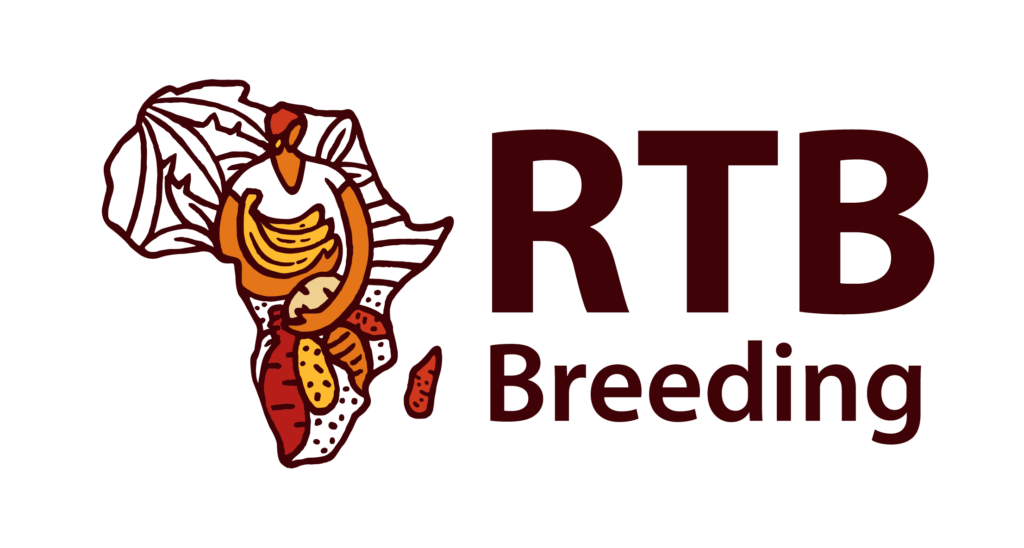Banana, cassava, potato, sweetpotato and yam (collectively referred to as roots, tubers, and bananas or RTB crops hereafter) are major contributors to poverty alleviation and food and nutrition security in sub- Saharan Africa (SSA). RTB crops provide nearly 50% of total caloric intake in D.R. Congo, Ghana, Tanzania and Rwanda, 30% in Uganda, and 25% in Africa’s most populated country, Nigeria. Moreover, given their role to buffer local food systems against external shocks such as conflicts disrupted global commodity supply chains, climate change, and forecasted population growth, unprecedented domestic production and value of production growth is predicted for these crops.
To deliver nutritious, affordable RTB food and supplies for processors in SSA, this proposal represents the first phase towards establishing a bold, ambitious plan that is within reach with an 11-year-long portfolio of investments in the genetic improvement of RTB crops. Our overarching purpose is to contribute, through the development of market-preferred, gender-sensitive, and climate-resilient varieties, to poverty alleviation, food and nutrition security, and overall quality of life of smallholder farmers, processors, and consumers in rural and urban areas.
We will contribute to all Genetic Innovation impact areas, namely, nutrition, health, and food security; poverty reduction, livelihoods, and jobs; gender equality, youth, and social inclusion; climate adaptation and mitigation; and environmental health and biodiversity.
We aim to achieve this by implementing state-of-the-art, streamlined breeding approaches, and the market-preferred varieties to be developed are expected to command increased adoption rates.
We will build upon capacities in African countries as well as those within One CGIAR that were developed through extensive prior BMGF breeding investments such as (Accelerated) Breeding Better Bananas, GT4SP, NextGen Cassava, RTBFoods, SASHA, SweetGAINS, Africa Yam and Excellence in Breeding. Moreover, we will build upon assets, infrastructure and human talent posted at several One CGIAR centers and national programs in SSA countries, research, development and extension programs, and advanced research institutions. The three One CGIAR centers will work as one team united by a common vision and strong sense of purpose, and the progress achieved through multiple, extensive prior BMGF breeding investments. Furthermore, they have already worked together in the CGIAR Research Program RTB, participated at each other’s annual meetings and other scientific venues such as shared training events.
The current phase, encompassing years 2023 and 2024, is based on the following tenets:
• A determined mindset to implementing modernized breeding approaches. As several modernization aspects have been already rolled out, our focus is to progressively streamline and mainstream these breeding approaches.
• An explicit focus on optimizing and delivering effective and efficient One CGIAR-NARS breeding networks.
• A strategic stance in the main countries of implementation, namely, Ghana, Mozambique, Nigeria, Tanzania, and Uganda, although the expected results and capacities will be extended to other countries and national programs as well.
• Encouraging and nudging the transition from a “one crop, one center” mindset towards a shared mindset in which staff will deliver results on specific crops and contribute to other RTB crops as well. RTB Breeding will foster cross-crop and cross-center collaboration and will serve as one partner to national programs. This addresses not only their relatively small available critical mass, but also creates previously unavailable professional growth opportunities and leveraged expertise across crops at One CGIAR centers and national programs alike.
• Awareness that establishing a culture oriented towards results and effective collaborations precedes technological change and not the other way around.
Ultimately, our vision of success for the RTB Breeding portfolio of breeding investments is underpinned by three interconnected domains: 1) mainstreaming genetic gain to smallholder farmers’ fields; 2) delivering nutritious, affordable, and demand-driven varieties able to achieve accelerated adoption and increased consumption in diverse urban and rural markets; and 3) designing and implementing a resources mobilization strategy aimed at growing a larger pool of diversified, leveraged research funding beyond the transition phase to hedge against shifts in funding trends, stakeholders, policies, and institutions.
